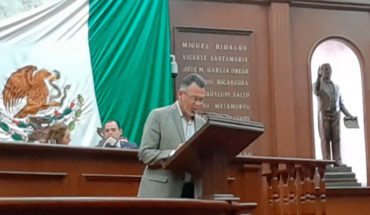
For the Cueto family – controlling Latam Airlines with 21% of the shares – air transport is not only the main commercial turn of its economic group – representing by the costa Verde Aeronáutica group – but also a pleasure and comfort that it shares with a small group of powerful entrepreneurs in Chile. For business trips, the Cueto family usually travels on a Citation Sovereign, a 3,200-mile U.S. business jet developed by Cessna. And for short trips to Cachagua, La Parva or Pucón, brothers Enrique and Ignacio Cueto move – or at least did so in this model until a few years ago – in a Eurocopter EC 130, a light helicopter, with a large cabin and with capacity for 7 people, which is why it is frequently used for medical services.
Enrique Cueto – the elder brother of the clan and personal friend of President Sebastián Piñera, with whom he shared until 2010 the control of LAN as majority shareholders and who led the company until March 31 of this year – was recognized in 2012 as one of the most successful air transport entrepreneurs in the world, as the merger with the Brazilian airline – TAM controlled by the Amaro family – , which made Latam the largest company in Latin America and one of the ten leading global air transport groups.
That, at least until yesterday morning, when Latam Airlines Group S.A. – with its subsidiaries in Chile, Peru, Colombia, Ecuador and the United States – officially communicated that it would benefit from the American Bankruptcy Act, better known as Chapter Eleven (Chapter 11), which was advanced by El Mostrador 10 days ago, but which official sources of the company defimint, argued that “Latam did not respond to speculation”. In a video broadcast in the early hours of Monday, Roberto Alvo, CEO of the company, said: “Latam entered the COVID-19 crisis as a healthy and profitable airline group, however, exceptional circumstances have led to a collapse in demand and have not only stopped global aviation and its revenue, but have shifted the industry into the future.”
Certainly, the global pandemic caused by SARS-CoV-2 led, in addition to the health tragedy, to a profound blow to the air transport industry, reducing, in Latam’s particular case, its operations by 95%. Reserved sources clarify, however, that his debt to Latam under these conditions did not originate six months ago, when the world learned of the first infections in China. “Latam’s problem was his over-indebtedness, which crawls far before, and that has to do with his management model. The coronavirus is just the excuse, it’s the theater where they programmed the play,” they argue.
The 11 billion debt
When airlines around the world began to account for the serious economic problems of the pandemic, it was suggested that a state bailout of Chile’s main airline required about US$600 million, about a third of its stock market assets. In comparative terms, that figure would be equivalent to an Emergency Basic Income of about $450,165 (poverty line for an average household) for one million households.
The overall debt, however, is noticeably higher. The company, in effect, accrues to date a debt of more than US$11 billion. And there is no company that can generate that volume of liabilities in the half year that the pandemic has been affecting the industry.
According to the data obtained by El Mostrador, Latam’s debts are divided into bonds, leasing, lease liabilities and bank loans. As a sample button, in international bonds the company owes more than US$2,064,934; in secured leasing obligations with banks, the sum amounts to US$2,157,357; lease liabilities, at US$3,172,157. These, in addition to other items, raise The indebtedness of Latam – as the same company confirms to El Mostrador – above US$10,365,000.
To that amount must be added a line that opened with Citi just over a month ago, for more than US$600 million, which raises the overall indebtedness above US$11 billion. Among the major banks to which Latam has not fulfilled its commitments are BBVA, Banco do Brasil, HSBC, Bank of New York, Bank of America and Deutsche Bank. Among the most committed entities is The Wilmington Trust, one of the top 10US interests in fiduciary assets and for these purposes represents Citibank and Santander of Spain.
Bank sources have reservedly assured this medium that outrage over Latam’s behavior in announcing the default is on the rise and that it has been “the most scratched” imaginable. For that reason, it would not be at all ruled out if, only a Latam plane stepped on, for example, some European snout, seeking to make the embargo effective. “Too many enemies have been bought,” so it’s a fact that banks and investors are “very difficult to put a weight on the company, as long as the Cuetos are still there.”
DIPPs, a round business
According to an essential fact informed to the president of the Commission for the Financial Market (CMF), Joaquín Cortez Huerta, on Tuesday, May 26, the public limited company Costa Verde Aeronáutica, owned by the Cueto family and the Amaro Family, in accordance with the rules established in Chapter 11 of the US Bankruptcy Act, made a financing commitment of US$300 million. Its partner Qatar Airways, for its part, committed to contribute another US$600 million. With that total of $900 million, Latam is brought to U.S. justice to deal with liabilities of US$11 billion.
This management – according to sources known to the case – leaves Latam and his Arab partner in pole position to enter into the negotiations of the procedure, because by filing a bankruptcy petition and providing financing to repay the debt, both partners fall under the figure of Debtor in Possession (DIP), for which he continues to maintain the assets. In other words, it holds a bank source, this type of debtor is “ultra, ultra preferential”. “You put silver to save the bankruptcy, but they have to pay you first. Silver that comes out of the process, pays you as a priority,” the fountain argues, without hiding a sarcasm. “It’s a freshness. They’ll turn it into secure equity.”
Even though today the value of the shares is very low – only yesterday the company lost more than US$500 million of its capital – and that the possibility of the procedure being successful is 50/50, Chapter eleven’s bet was a better alternative than performing the procedure in Chile, since together with a significant part of the liabilities, the company – according to analysts – gains time without losing liquidity to reorganize the company and establish a new corporate configuration. “Whatever comes out of there will be another Latam.”
The same sources also do not rule out that during this time other actors, such as the governments of Chile, Peru and Ecuador, may be a non-disposable possibility, but it is unlikely in the opinion of risk classifier Fitch.
Concern for Strategic Alliance
Although the Government and the political world advanced, yesterday, various positions that validate a financial bailout of Latam by Piñera’s administration, on the grounds that it is a strategic company, for connoisseurs of the world of industry business, what should be assessed is not Latam’s supposed strategic condition for Chile, but the negative impact on free competition of an ongoing strategic alliance of La Delta with Airlines and Qatar Airways.
In an essential fact reported to the CMF on May 7, Latam Airlines renewed its interest with Delta Airlines to implement a strategic alliance on routes between the United States of America and Canada, and the countries of Southern America, with open skies agreements and where no regulatory authorizations are required.
With this type of alliance, the American company Delta – which leads the global Alliance SkyTeam and which has a stake not only in Latam, but also aeromexico and Air France-KLM, among others – is privileged in the region. But that’s not all, as Qatar – Latam’s other major shareholder – entered the Chapter eleven procedure as Debtor in Possession, could also assert its position, a fact that is equally observed out of caution by free-competitive analysts, as Qatar is the controller of Airlines Group (IAG), the holding company that owns British Airways and Iberia, among others.
These operations, according to the sources, could be more damaging, for competition in the air market concerning Chile, than the rejected operation with American Airlines.
L





